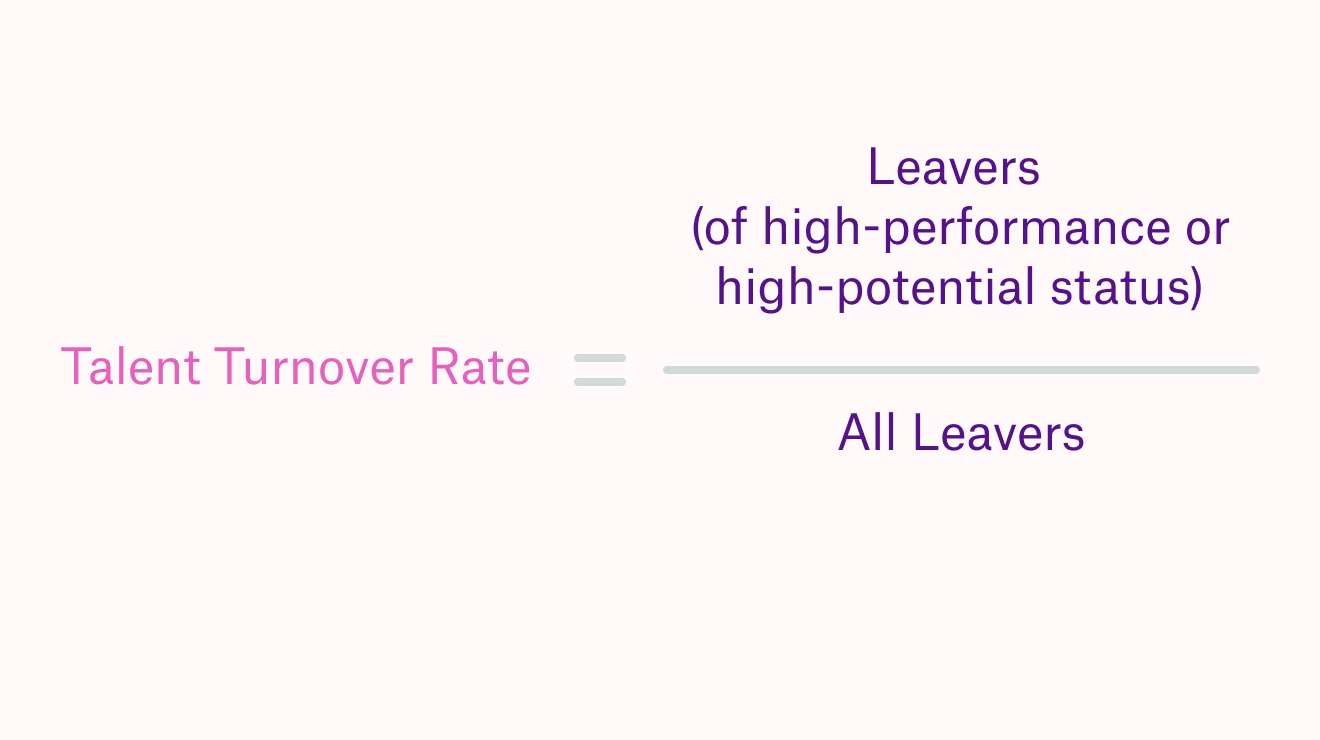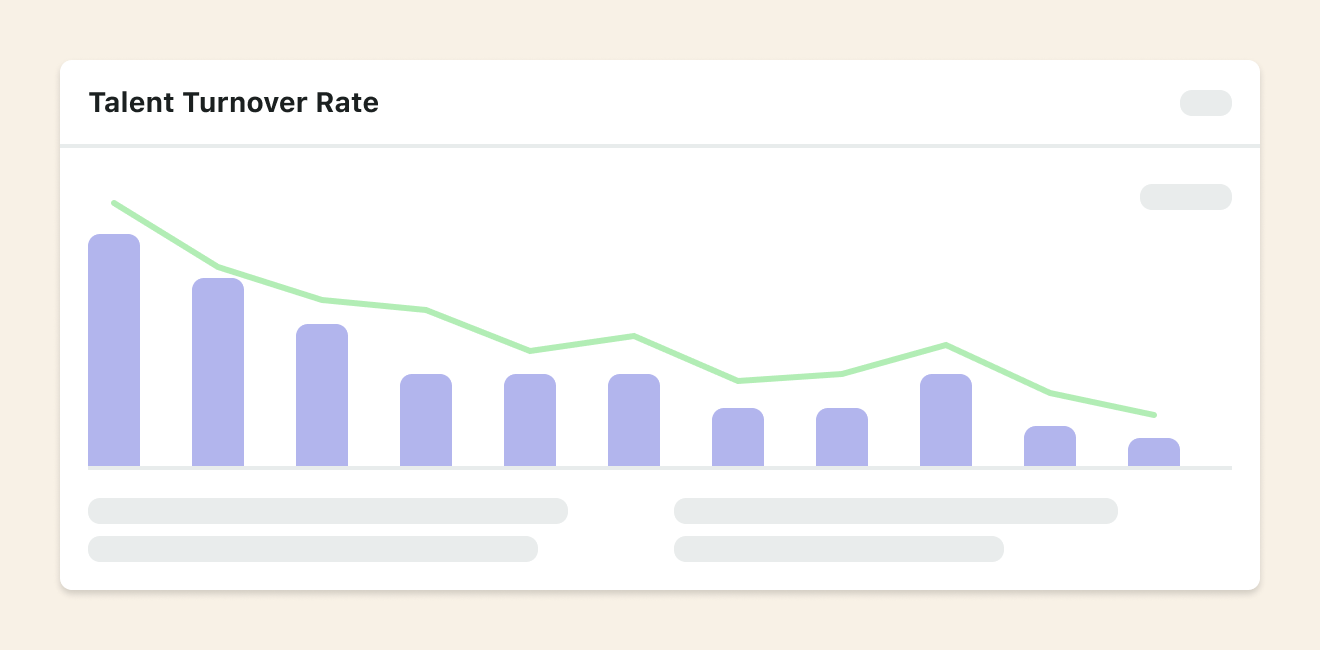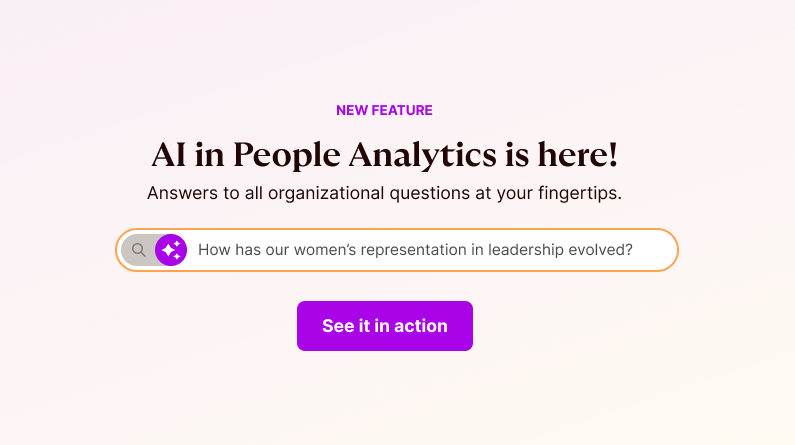How to know if you’re keeping your best people.
If you’re in growth mode, you’re probably more focused on hiring than retention.
To sustain your growth, though, you need to keep track of who’s coming in and who is leaving.
It’s a scramble when anyone leaves unexpectedly, but it can be even tougher when a high-performing or high-potential employee leaves. To find what talent you’re losing, you can calculate a talent turnover rate.
Your Talent Turnover Rate is the rate of turnover among your organization’s high-performing and high-potential employees. It reflects your company’s ability to retain the best talent you have at any given time.
How do I understand and calculate my talent turnover rate?
To start, you need to link your HRIS and performance management system to a platform that lets them talk to each other (like Orgnostic). Then you can pull which employees are leaving and the high-performance and -potential status of each of those employees.
Use these categories and this formula below to find the percentage of all leavers that are high-potential/performance.

Then, you can map this talent turnover rate month to month and see if there’s a trend you should be worried about.

So what?
What makes a high-performing and/or high-potential employee leave?
First off, you should ask them! Then gather those exit interview insights together and make sense of them with our handy metrics.
High-performers may have lots of confidence in their abilities and more opportunities from this combination of recognition and skill. High-potential programs can change the expectations that employees have for themselves, and the belief others have in them. In this way, your high-potential program may be working for you in one sense (to help you identify and develop employees) and working against you in another (to improve your employees’ standing in the overall labour market.
How can you reduce this talent turnover rate?
The factors affecting retention for all employees apply to high performers and employees with high potential as well. However, some factors may be even more discouraging for this select group of workers. For example, issues with compensation and rewards reflect employees’ sense of equity and fairness. If employees feel they’ve put more effort and skill into their work than others, but they receive the same compensation and no recognition for it, they can be less motivated to stay.
Equity and fairness come into play for more than just compensation and rewards. The diversity (or lack thereof) of your high-performing employees can play a role in your talent turnover rate too. How quickly you handle low performers affects your high-potential folks, which you might not have considered. If your stars feel they’re being dragged down and you’re not doing anything about it, they may be looking for somewhere else to shine.
The way employees’ jobs are designed also impacts turnover. For high-performance and -potential employees, job features like autonomy and feedback may be available in roles at other companies, too. This means your organization can improve the characteristics of your jobs for all employees and address the talent turnover rate.
Overall, building a stronger high-potential program and making sure your performance management system is fair can strengthen employees’ confidence in how they’ll be treated at your company. Solidifying the bond between talented employees and your organization, from pay to performance management to training, can increase commitment and reduce voluntary turnover.

From the Talent Management series: